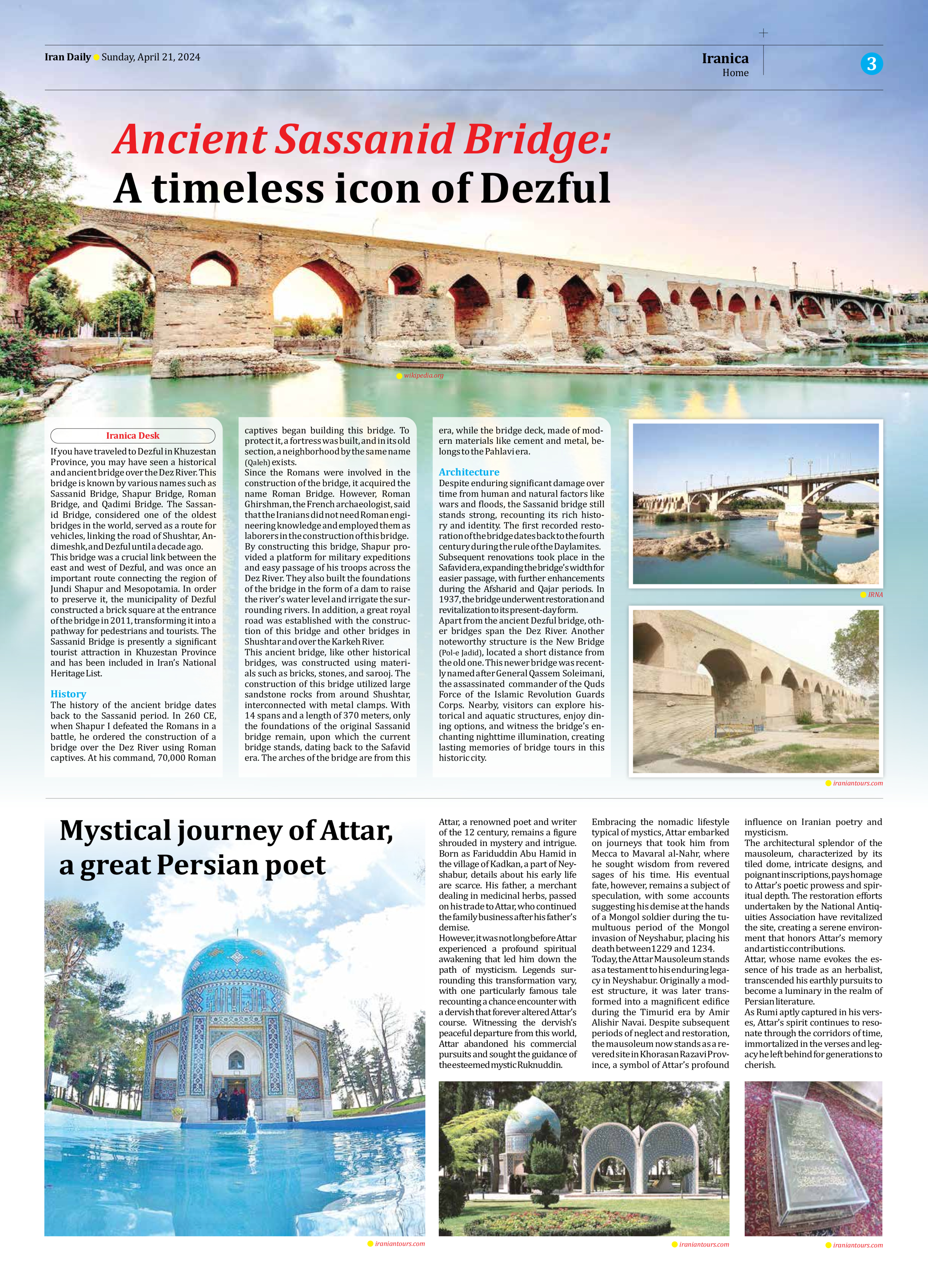
Mystical journey of Attar, a great Persian poet
Attar, a renowned poet and writer of the 12 century, remains a figure shrouded in mystery and intrigue. Born as Fariduddin Abu Hamid in the village of Kadkan, a part of Neyshabur, details about his early life are scarce. His father, a merchant dealing in medicinal herbs, passed on his trade to Attar, who continued the family business after his father’s demise.
However, it was not long before Attar experienced a profound spiritual awakening that led him down the path of mysticism. Legends surrounding this transformation vary, with one particularly famous tale recounting a chance encounter with a dervish that forever altered Attar’s course. Witnessing the dervish’s peaceful departure from this world, Attar abandoned his commercial pursuits and sought the guidance of the esteemed mystic Ruknuddin.
Embracing the nomadic lifestyle typical of mystics, Attar embarked on journeys that took him from Mecca to Mavaral al-Nahr, where he sought wisdom from revered sages of his time. His eventual fate, however, remains a subject of speculation, with some accounts suggesting his demise at the hands of a Mongol soldier during the tumultuous period of the Mongol invasion of Neyshabur, placing his death between1229 and 1234.
Today, the Attar Mausoleum stands as a testament to his enduring legacy in Neyshabur. Originally a modest structure, it was later transformed into a magnificent edifice during the Timurid era by Amir Alishir Navai. Despite subsequent periods of neglect and restoration, the mausoleum now stands as a revered site in Khorasan Razavi Province, a symbol of Attar’s profound influence on Iranian poetry and mysticism.
The architectural splendor of the mausoleum, characterized by its tiled dome, intricate designs, and poignant inscriptions, pays homage to Attar’s poetic prowess and spiritual depth. The restoration efforts undertaken by the National Antiquities Association have revitalized the site, creating a serene environment that honors Attar’s memory and artistic contributions.
Attar, whose name evokes the essence of his trade as an herbalist, transcended his earthly pursuits to become a luminary in the realm of Persian literature.
As Rumi aptly captured in his verses, Attar’s spirit continues to resonate through the corridors of time, immortalized in the verses and legacy he left behind for generations to cherish.







